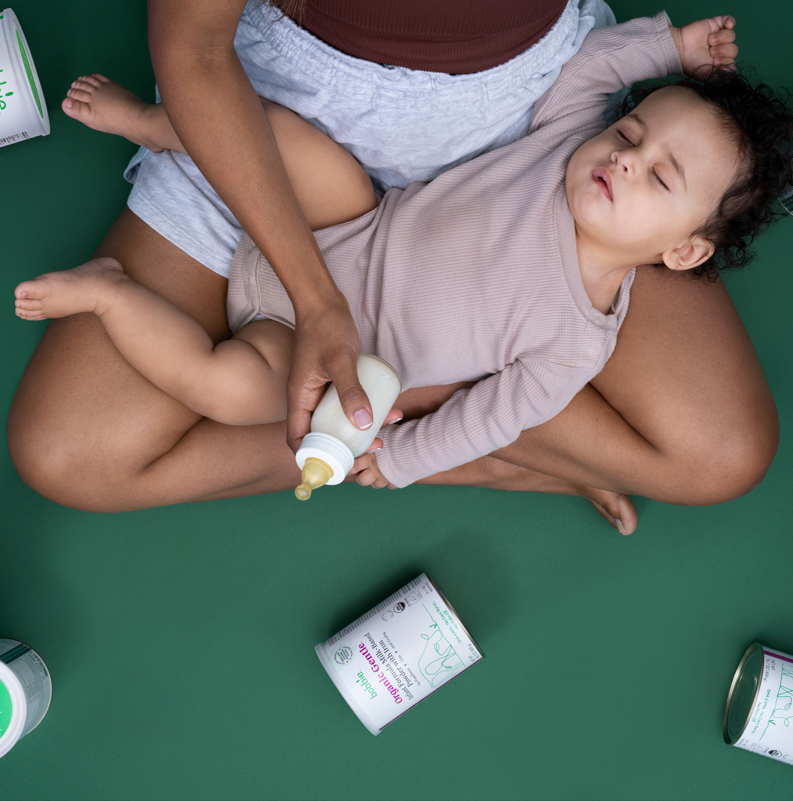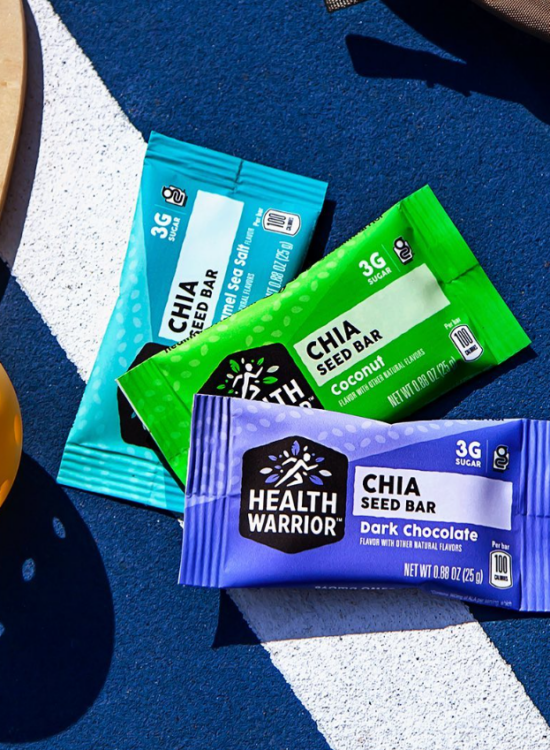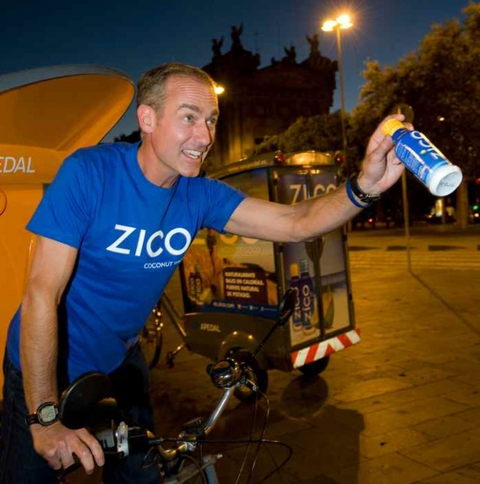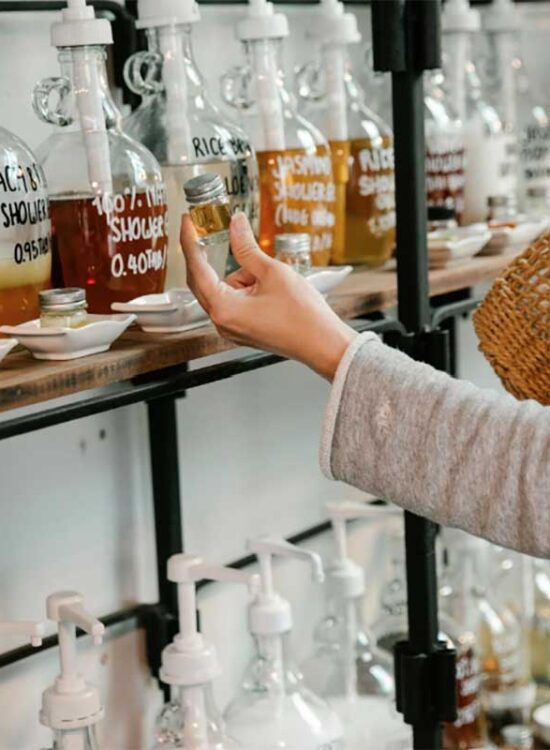Feeding the Demand: The Changing U.S. Infant Formula Industry
September 3, 2024
In 2016, new mom Laura Modi was blinded by fluorescent lights in Aisle 3.
Carrying her newborn and battling her first bout of mastitis, she sifted through formula labels filled with corn syrup, fillers, and palm oil – ingredients she wouldn’t consume herself.
“I was exhausted and resentful that I failed at breastfeeding and had to resort to a second-best option, a formula with ingredients I wouldn’t want to consume myself,” Modi told CNN.
Through extensive research, Modi discovered that cleaner ingredients were virtually absent from U.S. formula shelves yet readily available in the E.U.
In fact, many parents seeking healthier formula in the U.S. have been turning to using illegally imported grey-market European formula for years, frequently resulting in opaque supply chains and pricing and an awkward experience doing something that is perceived to be best for your child yet banned by the U.S. FDA.
When Modi’s daughter turned one, she left her role as an Airbnb exec and set out to create a baby formula that mimicked European nutritional profiles. Bobbie, the first European-style formula, was born.
With breastfeeding challenges, formula shortages, and heightened awareness of nutritional needs, American formula is evolving – creating opportunities for innovations like Bobbie.
Feeding into formula needs
While 90% of American mothers set out to fulfill the American Academy of Pediatrics recommended six months of breastfeeding, the real-time results are much different:
- 47% of mothers start using formula earlier than planned.
- Mothers begin using formula three to four months earlier than expected.
- 83% of new parents turn to formula to ensure their babies receive adequate nutrition.
- 45% of mothers are exclusively breastfeeding at three months.
- Less than 30% are still breastfeeding at six months.
With 80% of American mothers breastfeeding initially, these numbers point to a challenge Modi shared – it’s not easy to sustain. Despite public health campaigns increasing the number of breastfeeding mothers, the U.S. lags other industrialized nations in breastfeeding education, support, and parental leave policies.
In a survey of 1,000 mothers, about 60% of moms cited these reasons for ending their breastfeeding journeys sooner than expected:
- Difficulties with milk supply lead to formula supplementation
- Concerns about the baby’s health, illness, or the need to take medication
- The effort required to pump milk
Without a national statutory paid maternity, paternity, or parental leave policy, mothers are returning to work in droves, often to environments that don’t accommodate breastfeeding.
In an Aeroflow Breastpumps study:
- Only 47% of moms shared that their work had a mother’s room adequate for their needs.
- 12% said a room was available, but inadequate for pumping.
Despite this, there are no legal requirements for mother’s rooms in the workplace.
The result?
Countless stories like Modi’s reluctant first-time formula purchase – and moms turning to formula as a primary feeding source.
The American formula market
Certain medical conditions, medications, and even birth trauma make formula the only option for many Americans. As awareness heightens about widespread breastfeeding obstacles, the stigma against formula is changing.
Formula feeding continues to become a necessity in American households, making it a market worth $6 billion. By 2032, the market valuation is anticipated to reach $12.3 billion.
Since 1980, Enfamil (Reckitt) and Similac (Abbott) have dominated 80% of the market share. Seemingly the only options available, consumer loyalty has been a byproduct. But in the wake of an unprecedented formula shortage, that began to shift.
In November 2022, the FDA shut down an Abbott Nutrition facility in Michigan due to bacterial contamination from Cronobacter sakazakii or Salmonella. Cronobacter sakazakii, a deadly bacteria linked to powdered formula, led to an outbreak that resulted in several illnesses and two infant deaths.
Suddenly, a necessary life source for millions of families was stripped from the shelves. By May 2022, 43% of formula products were out of stock nationwide, up from 2% to 8% in January 2022. States like Iowa, the Dakotas, Missouri, and Texas, had 50% out-of-stock rates.
The Cronobacter contamination was just one part of a larger quality control issue. Add supply chain bottlenecks caused by the pandemic, and it was clear policies needed to change.
To address these gaps in the system, the Biden administration enacted formula supply policies:
- The Defense Production Act (DPA) prioritized orders for raw materials and consumables for Abbott Nutrition and Reckitt, enabling them to boost production.
- Operation Fly Formula aimed to alleviate shortages by expediting the import of infant formula to the United States using military aircraft.
Despite strides to improve the state of American formula, consumers – parents feeding their babies – began looking to European brands as safer alternatives.
European formula standards
With dwindling confidence in American formula’s safety and nutritional value, many parents banded together in Facebook groups, group chats, and meet-ups to find alternatives.
In addition to holding 90% of the global formula market share at a crucial time in 2022, European formula was noted for its nutritional profile. It started garnering attention, and desperate parents went as far as to import it illegally to the U.S.
One Facebook group with more than 30,000 members was full of parents looking to “avoid ‘GMO ingredients’ and ‘added corn syrup.’” They shared spreadsheets ranking the European formulas they deemed “best” citing the Swiss brand Holle, the German brand HiPP, and the U.K. brand Kendamil.
But were these European formulas nutritionally superior?
Anthony Porto, a pediatric gastroenterologist and pediatrics professor at Yale University, conducted a study to answer that crucial question. His research found that most European formulas do meet FDA nutritional guidelines, even though they aren’t officially approved by the FDA. However, as Bridget Young, Ph.D., a professor of pediatrics at the University of Rochester, points out, American formulas don’t always meet the same stringent standards.
Here’s what makes European formulas different:
- They follow strict guidelines for nutrients like DHA, an important omega‑3 fatty acid, and limit harmful substances like pesticide residues.
- They use lactose, similar to breast milk, as the main carbohydrate instead of other sweeteners found in American formulas.
- Many European formulas are organic and non-GMO, which is still uncommon in the U.S.
- Some are made from goat’s milk or milk from pasture-raised cows, offering options not available in the U.S.
- European brands often use hydrolyzed proteins that are easier for babies to digest.
With nutritional profiles more closely mimicking breast milk and free from sugary ingredients in American formula, consumer preferences toward European formula grew.
At the same time, American access to European formula became scarcer.
Accessibility barriers
Dr. Porto’s study also revealed several challenges that U.S. parents face when trying to use European formulas:
- The instructions are often in Dutch or German, not English.
- European formulas are mixed differently, potentially causing parents to dilute their baby’s formula.
- The FDA doesn’t regulate the temperature or quality of imported European formulas, which raises concerns about their safety.
With these tangible safety and quality concerns, the Department of Agriculture’s Dietary Guidelines for Americans made the call:
“Homemade infant formulas and those that are improperly and illegally imported into the United States without mandated FDA review and supervision should not be used.”
Bridging the formula gap
One way forward was to make European nutritional standards accessible to American parents.
Bobbie, one of GroundForce Capital’s portfolio companies, led the charge and is currently the only U.S. formula fulfilling the EU’s nutritional guidelines.
Coining the term “European-style” formula, Bobbie meets FDA’s regulatory standards while checking the EFSA boxes:
- Lactose as the carbohydrate source
- Organic and non-GMO
- Meets EU standards for DHA
- Milk sourced from pasture-raised cows
Taking infant nutrition a step further, Bobbie expanded into pediatric supplements in April 2024. Removing the uncertainties that come with supplement selection, Bobbie offers Vitamin D and Probiotic drops to support immunity and digestion for little ones.
Like Bobbie’s formula, these are crafted without additives or chemicals. They withstand rigorous quality and safety testing to ensure their supplements meet the highest standards.
The growing demand for cleaner infant products, driven by the needs of new parents and beyond, presents an opportunity that Bobbie is dedicated to pursuing.



